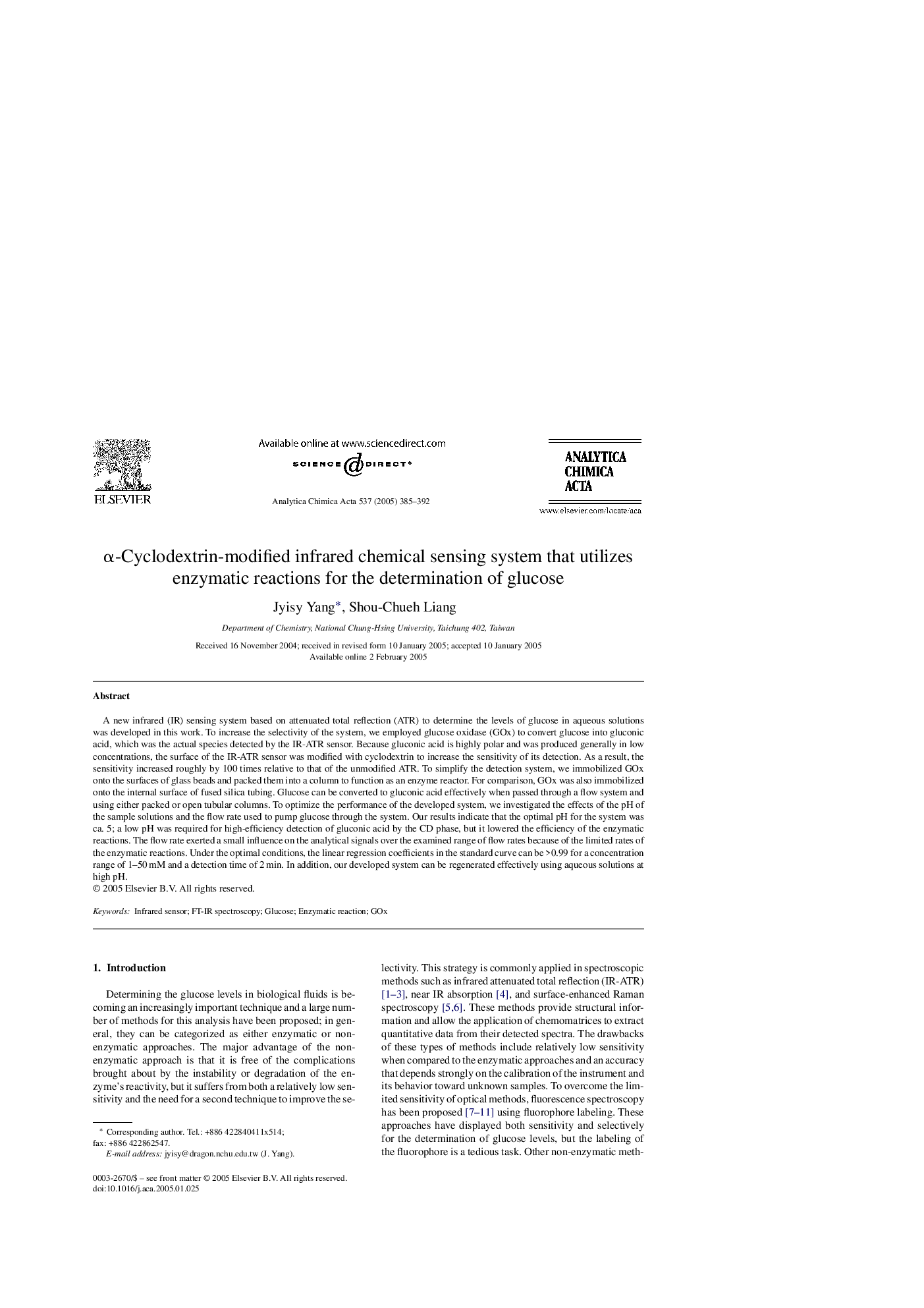| Article ID | Journal | Published Year | Pages | File Type |
|---|---|---|---|---|
| 9743810 | Analytica Chimica Acta | 2005 | 8 Pages |
Abstract
A new infrared (IR) sensing system based on attenuated total reflection (ATR) to determine the levels of glucose in aqueous solutions was developed in this work. To increase the selectivity of the system, we employed glucose oxidase (GOx) to convert glucose into gluconic acid, which was the actual species detected by the IR-ATR sensor. Because gluconic acid is highly polar and was produced generally in low concentrations, the surface of the IR-ATR sensor was modified with cyclodextrin to increase the sensitivity of its detection. As a result, the sensitivity increased roughly by 100 times relative to that of the unmodified ATR. To simplify the detection system, we immobilized GOx onto the surfaces of glass beads and packed them into a column to function as an enzyme reactor. For comparison, GOx was also immobilized onto the internal surface of fused silica tubing. Glucose can be converted to gluconic acid effectively when passed through a flow system and using either packed or open tubular columns. To optimize the performance of the developed system, we investigated the effects of the pH of the sample solutions and the flow rate used to pump glucose through the system. Our results indicate that the optimal pH for the system was ca. 5; a low pH was required for high-efficiency detection of gluconic acid by the CD phase, but it lowered the efficiency of the enzymatic reactions. The flow rate exerted a small influence on the analytical signals over the examined range of flow rates because of the limited rates of the enzymatic reactions. Under the optimal conditions, the linear regression coefficients in the standard curve can be >0.99 for a concentration range of 1-50Â mM and a detection time of 2Â min. In addition, our developed system can be regenerated effectively using aqueous solutions at high pH.
Related Topics
Physical Sciences and Engineering
Chemistry
Analytical Chemistry
Authors
Jyisy Yang, Shou-Chueh Liang,
